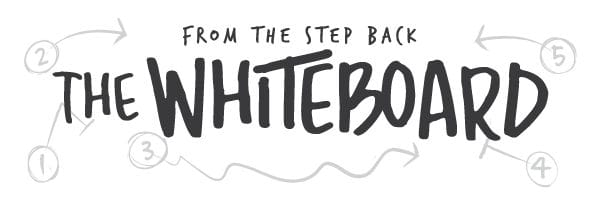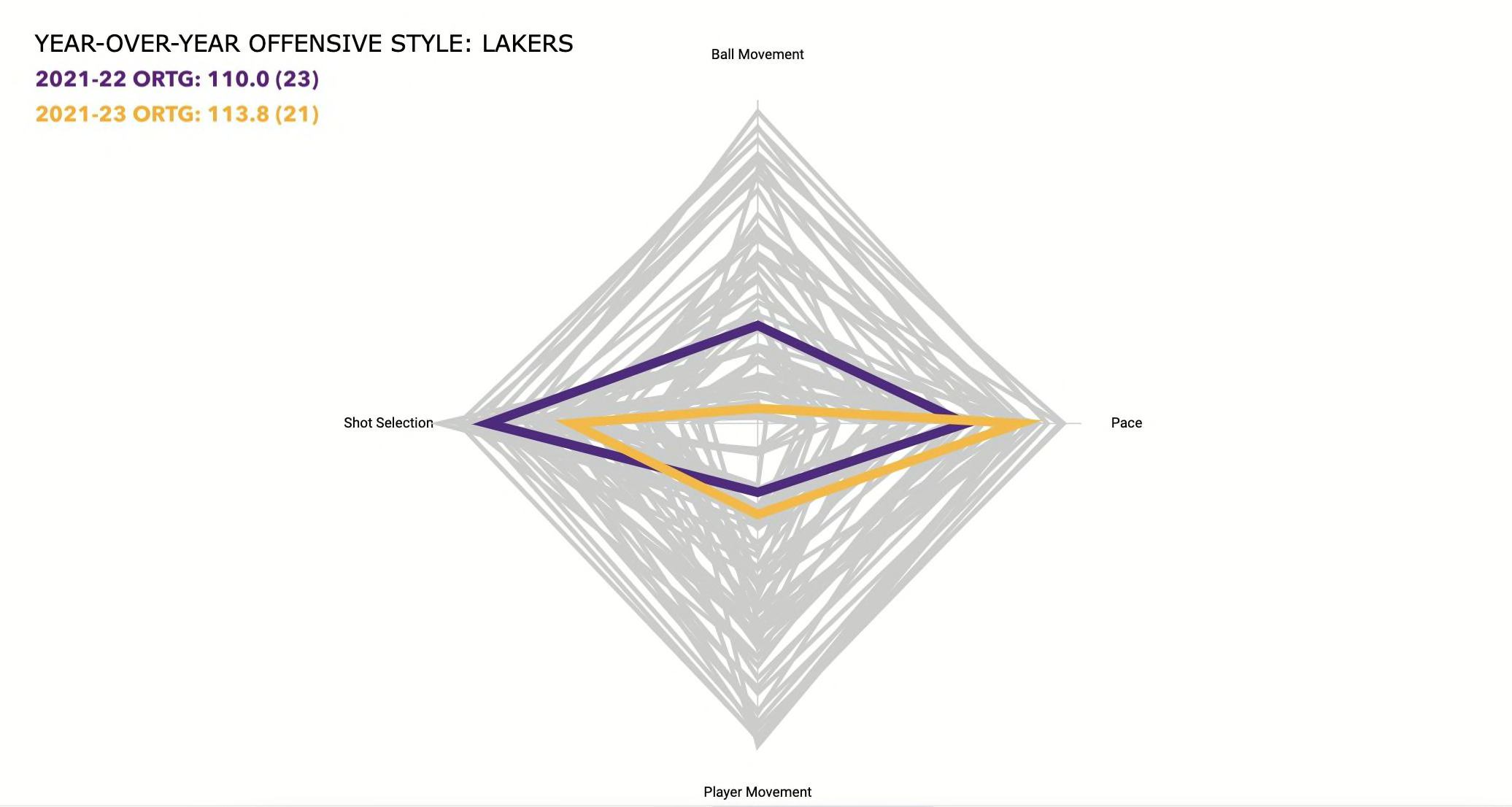In today’s NBA news, the Nuggets need to figure out how to defend Kevin Durant, we’re measuring the Lakers offensive changes and more.
For the second time in a little over a week, the Phoenix Suns knocked off the Denver Nuggets. This second win was a bit less instructive since the Nuggets were without Nikola Jokic, Aaron Gordon, Jamal Murray and Michael Porter Jr. But it saw Kevin Durant go off again — he’s scored 59 points on 20-of-33 from the field and 8-of-13 from beyond the arc in the two games — and raised the question of how Denver would deal with him in a hypothetical second-round playoff matchup.
How will the Denver Nuggets try to slow down Kevin Durant?
The Nuggets’ big defensive additions this offseason were Bruce Brown and Kentavious Caldwell-Pope, both of whom may be well suited for chasing around Devin Booker but neither has the length to really deal with Kevin Durant.
The Nuggets sat most of their starters for last night’s game so Peyton Watson and Jeff Green had the primary Durant assignment. Watson is a rookie who has appeared in just 21 games and didn’t break double-digit minutes until the Nuggets’ first matchup with the Suns just over a week ago. It’s possible he gets some spot minutes in the playoffs but it seems far more likely that Aaron Gordon and Jeff Green will carry the load.
Gordon was the primary Durant defender during that first matchup a week ago and, did a decent job. According to the NBA’s matchup stats, Durant scored 12 points in the 23 possessions Gordon was his primary defender, shooting 5-of-6 from the field and 2-of-3 from beyond the arc. But several of those were static spot-up 3-pointers where Gordon was just a half-second late closing out.
On the handful of occasions where Durant scored over Gordon in isolation or in motion, it was usually the kind of elite shot-making that even strong defense can’t really take away.
In both games, Durant was fairly aggressive in attacking mismatched defenders like Ish Smith or Reggie Jackson, or inexperienced ones like rookie Christian Braun. Switching may be a big issue because any switch involving Durant is going to give him a smaller defender that he can shoot over the top of. The upshot may be that Gordon is quick enough to stick around with Booker and they may be able to play switch heavy and feel good about their ability to stymie Booker and Chris Paul and simply do their best to make Durant’s shots challenged and live with the result.
Booker has put up 42 points across these two recent matchups but the Nuggets have held him to 12-of-32 from the field, 3-of-14 on 3-pointers and forced him into six turnovers. He’s logged 14 assists but the majority of those went to role players like Torrey Craig, Landry Shamet and Bismack Biyombo — a preferable outcome to Booker helping activate scoring opportunities for Durant and Deandre Ayton.
In the end, the Nuggets aren’t going to stop Durant, because no one has this season. But it’s about a series of preferred outcomes — keep Gordon on Durant as much as possible but make him shoot over the top of aggressive pressure if he forces a switch. Make things hard for Booker and make him a passer with the Suns’ lesser offensive players as finishers. Do all that, let Nikola Jokic on offense and things might just work out for the Nuggets.

Subscribe to The Whiteboard, FanSided’s daily email newsletter on everything basketball. If you like The Whiteboard, share it with someone you love! If you don’t like The Whiteboard, share it with someone you loathe!
Got a basketball question? Send it to us on Twitter or by email and we’ll try to answer it in an upcoming mailbag.
Lakers offensive changes
This Lakers season began with dramatic offensive struggles particularly from behind the 3-point line. The rest of their regular season has largely been marked by the chaos of trades and injuries and we’ve seen some fairly significant changes to their offensive style as the season has gone on. With the regular season coming to a close I thought it would be useful to look at their evolution through the prism of offensive style charts.
These charts are not meant to evaluate whether an offense is good or bad. They are designed to help illustrate how teams go about the goal of trying to put the ball in the basket. Each team’s offense is evaluated on four stylistic spectrums.
Ball movement is measured with the average touch time for each team, from the NBA’s player tracking statistics. A lower average touch time means the ball is moving from player to player more quickly.
Player movement is measured with a combination of different NBA.com tracking statistics and works out to average distance traveled per 24 seconds of offensive possession.
Pace is measured with the average length of an offensive possession from Inpredictable, a more accurate representation of how quickly a team is working than traditional pace.
Shot selection is measured with MoreyBall percentage — in this case the percentage of a team’s true shooting opportunities that came at the rim, from the free-throw line, or on a 3-pointer. It’s a generalized measure but captures something about how much each team hews to the shots that are, on average, the most efficient.
On the graphs below you’ll see a line for each team’s offense. As the line moves away from the center of the graph on each axis you’re seeing more of that stylistic trait. For example, shot selection shows a (hypothetically) more efficient shot selection the further you are from the center.
Here is how the Lakers look this year compared to last year:

It’s hard to attribute specific degrees of change to specific variables but the combination of injuries and early 3-point shooting struggles clearly made the team’s offense retreat to some degree from the 3-point line. Just 34.8 percent of the Lakers’ shot attempts this season have come from beyond the arc, 26th in the league, compared to last season — 38.8 percent, 19th in the league.
They also utilized a lot less ball movement with players like Russell Westbrook, Dennis Schroder, LeBron James, D’Angelo Russell, Austin Reaves, Patrick Beverley and Lonnie Walker all finishing with average touch times of three seconds or longer. Last season, Westbrook, LeBron, and Talen Horton-Tucker were the only regular rotation staples with an average touch time of three seconds or longer.
There has been too much chaos in the Lakers rotations over the past few weeks to really measure meaningful style changes since the trade deadline but as the playoffs begin and rotations tighten we’ll be able to see how this new roster really works together.
NBA news and content from around the FanSided network
The end-of-season NBA All-Stars
As teams begin shutting down starters at the end of the season we always see some young players unexpectedly going off. Based on stats from their past 10 games, here’s an eight-man All-Star team of just first- and second-year players who were below the radar for much of the season.
- PG: Quentin Grimes — In his last 10 games for the Knicks, Grimes is averaging 17.7 points, 3.9 rebounds and 3.2 assists per game, shooting 53.4 percent from the field and 48.8 percent from beyond the arc.
- SG: Ochai Agbaji — In his last 10 games for the Jazz, Agbaji is averaging 14.5 points, 3.2 rebounds and 2.2 assists per game, shooting 35.8 percent from beyond the arc.
- SF: Shaedon Sharpe — In his last 10 games for the Trail Blazers, Sharpe is averaging 22.6 points, 5.7 rebounds, 3.8 assists per game and 1.0 steals per game, shooting 47.1 percent from the field and 40.0 percent from beyond the arc.
- PF: J.T. Thor — In his last 10 games for the Hornets, Thor is averaging 10.0 points, 3.6 rebounds and 1.0 blocks per game, shooting 50.0 percent from the field and 42.5 percent from beyond the arc.
- C: James Wiseman — In his last 10 games for the Pistons, Wiseman is averaging 13.4 points and 7.1 rebounds, shooting 52.3 percent from the field.
- Bench: Jaden Hardey — In his last 10 games for the Mavs, Hardy is averaging 9.8 points, 2.1 rebounds and 2.1 assists per game, shooting 56.8 percent from beyond the arc.
Today’s NBA Trivia
In honor of today’s look at the Lakers’ offense, when was the last time the Los Angeles Lakers led the league in offensive efficiency?
The answer for yesterday’s trivia question: At 30.5 percent, Marquese Chriss holds the record for the lowest 3-point percentage on wide-open attempts in a season (since 2013-14, minimum of 175 attempts).